#Who Was Charles Curtis
Text

Portrait of Charles Curtis Strauss Peyton, Kansas City, Missouri, Public domain, via Wikimedia Commons
In 2021, Senator Kamala Harris made history as the first woman, first African American, and first person of South Asian heritage to become vice president of the United States. But she wasn’t the first person of color to take the office. That honor belongs to Charles Curtis, an enrolled member of the Kaw Nation who served as President Herbert Hoover’s veep for his entire first term from 1929 to 1933. Prejudice against Native Americans was widespread and intense at the time, but Curtis’s ascent to the office speaks to his skillful navigation of the political system. His rise also tells a broader story of how prominent Native Americans viewed how their communities should assimilate within a predominately white society and government. The policies Curtis pursued in Congress and then as vice president, specifically those on Native issues, cloud his legacy today despite his groundbreaking achievements.
Curtis was born in 1860 to a white father from a wealthy Topeka family and a mother who was one quarter Kaw (a tribe also known as Kanza or Kansa). When he was young, Curtis’ mother died, and his father fought in the Civil War for the United States. Growing up, he spent time living with both his sets of grandparents and for eight years, he lived on the Kaw reservation. Curtis grew up speaking Kanza and French before he learned English.
Mark Brooks, site administrator for the Kansas Historical Society’s Kaw Mission site, says Curtis was known for his personal charisma.
“He had a knack for conversation,” Brooks says. “He was just a very likeable person even early on when he was just a young boy in Topeka.”
In 1873, the federal government forced the Kaw south to Indian Territory, which would later become Oklahoma. The adolescent Curtis wanted to move with his community, but, according to his Senate biography, his Kaw grandmother talked him into staying with his paternal grandparents and continuing his education.
“I took her splendid advice and the next morning as the wagons pulled out for the south, bound for Indian Territory, I mounted my pony and with my belongings in a flour sack, returned to Topeka and school,” Curtis later recalled, in a flourish of self-mythologizing. “No man or boy ever received better advice, it was the turning point in my life.”
Curtis gained some fame as a talented horse rider, known on the circuit as “Indian Charlie.” But his grandparents on both sides encouraged him to pursue a professional career, and he became a lawyer and then a politician. Contemporary accounts cite his personal charm and willingness to work hard served him well in politics. Kansas politician and newspaper editor William Allen White described him carrying books with the names of Republicans in each Kansas township, mumbling the names “like a pious worshiper out of a prayer book” so that he could greet each of them by name and ask about their family.
Despite the racist treatment of the Kaw by white Kansans—which included land theft and murder—many whites were obviously willing to vote for Curtis.
“The one thing that might have lightened the persecution of Curtis was that he was half white,” Brooks says. “He’s light-complected, he’s not dark-skinned like a lot of Kanza. His personality wins people over—unfortunately, racists can like a person of color and still be a racist, and I think that’s kind of what happened with Charlie. He was just a popular kid.”
Curtis rose within the Republican Party that dominated Kansas and became a congressman, then senator, and eventually Senate majority leader. In office, he was a loyal Republican and an advocate for women’s suffrage and child labor laws.
Throughout his time in Congress, Curtis also consistently pushed for policies that many Native Americans today say were a disaster for their nations. He favored the Dawes Act of 1887, passed a few years before he entered Congress, which allowed the federal government to divide tribal lands into individual plots, which eventually led to the selling of their land to the public. And in 1898, as a member of the Committee on Indian Affairs, he drafted what became known as the Curtis Act, extending the Dawes Act’s provisions to the so-called “Five Civilized Tribes” of Oklahoma.
“[The Curtis Act] enabled the dissolution of many tribal governments in Oklahoma on the path to Oklahoma becoming a state,” says Donald Grinde, a historian at the University at Buffalo who has Yamasse heritage. “And of course, that [opened up] tribal land in Oklahoma to white settlers, sooners.”
Curtis also supported Native American boarding schools, in which children were taken from their families and denied access to their own languages and cultures. Abuse was rampant. Grinde cites the schools as a factor in the population decline of Native Americans between 1870 and the 1930s.
“You tell mothers, ‘OK, you’re going to give birth to a child, but at 5 they’re going to be taken from you,’” Grinede says. “Lots of Indian women chose not to have children.”
Historian Jeanne Eder Rhodes, a retired professor at the University of Alaska and enrolled member of the Assiniboine and Sioux tribes, says land division under the Dawes and Curtis Acts ultimately “destroyed everything” for many Native American tribes. At the time, however, Curtis’ positions were far from unique among Native Americans. While many were dead set against land division and other policies pushed by the federal Bureau of Indian Affairs, others believed that tribes must assimilate into white American society and adopt norms like individual land ownership.
“At the turn of the century when he’s working there are very prominent Indian scholars and writers and professional Indian people who are all talking about these issues,” Rhodes says. “Some of them are opposed to the idea, some of them are opposed to the Bureau of Indian Affairs, some of them are working for the Bureau of Indian Affairs.”
She said Curtis, like other Native American assimilationists, was concerned with issues like the education and health of Native American people, who were already suffering immensely in a pre-Dawes Act United States. And, she said, if Curtis hadn’t supported assimilation, he would never have gotten far in the era’s white-dominated politics.
“What do you do when you’re in a situation like Curtis?” Rhodes says. “He’s proud of his heritage and yet he wants to be in a position where he can do something to support Native issues. I think he tried his best and I think he regretted, in the end, being assimilationist.”
As Curtis approached his late 60s, already having achieved so much, he had one more rung to climb on the political ladder. In 1927, when Republican President Calvin Coolidge announced that he would not run for another term, he saw his chance to run for President the following year.
His plan was to run a behind-the-scenes campaign, seeking support from delegates who he hoped would see him as a compromise candidate if they couldn’t come together behind one of the frontrunners. Unfortunately for him, that scenario didn’t pan out; Secretary of Commerce Herbert Hoover won on the first ballot.
By this time, there was already bad blood between Curtis and Hoover. The senator had bristled at Hoover’s choice in 1918 to campaign for Democratic candidates and tried to stop then-President Warren G. Harding from appointing him to his cabinet, which he did anyway in 1921. Seven years later, the Republican Party saw putting the two together on their ticket as the solution to a serious problem: Hoover was tremendously unpopular with farmers. Curtis, Kansas’ beloved veteran senator, offered the perfect choice to balance out the Commerce Secretary.
But what about his race? Grinde says Republican Party leaders and voters would have been aware of Curtis’ Kaw identity.
“They recognized that he was one-eighth Indian, but he had served the interests of white people for a long, long time,” Grinde says.
He also notes that the relationship of white Americans of the time with Native American identity was complicated. For some white people with no cultural links to Native nations, it might be a point of pride to claim that their high cheekbones marked them as descendants of an “American Indian princess.”
Despite his assimilationist politics, throughout his career Curtis honored his Kaw heritage. He had an Indian jazz band play at the 1928 inauguration and decorated the vice presidential office with Native American artifacts. And, even if many Native American people were unhappy with the land allotment plans he had championed, many Kaw were proud of him. When he was chosen for the vice presidential slot on the Republican ticket, Kaw communities in Oklahoma declared “Curtis Day,” and some of his Kaw relations attended the inauguration.
After all he had achieved to reach the vice presidency, Curtis’ time in office was anticlimactic. Hoover remained suspicious of his former rival and, despite Curtis’ enormous expertise in the workings of Congress, kept him away from policy. Washington insiders joked that the vice president could only get into the White House if he bought a ticket for the tour. The best-known event of his term involved a dispute over social protocol between Curtis’ sister, Dolly, and Theodore Roosevelt’s daughter, Alice. Dolly acted as Curtis’s hostess since his wife had died before he became vice president, and asserted that this gave her the right to be seated before the wives of congressmen and diplomats at formal dinners. Alice bristled over what she characterized as the questionable “propriety of designating any one not a wife to hold the rank of one.” And, aside from personal squabbles, the onset of the Great Depression made the White House a difficult place to be. In 1932 the Hoover-Curtis ticket lost in a landslide defeat to New York Governor Franklin Delano Roosevelt and Speaker of the House John Nance Garner.
And yet, Brooks says, Curtis did not lose his taste for politics. After his defeat he chose to stay in Washington as a lawyer rather than go home to Topeka. When he died of a heart attack in 1936, he was still living in the capital.
“That had become who he was,” Brooks says.
#american history#Charles Curtis#Kaw Nation#Who Was Charles Curtis#the First Vice President of Color?
4 notes
·
View notes
Text
Headcanon - Remember the post of the curse the Toppat Clan I made? The kids who grew up with Sven were Burt Curtis (born a Toppat), Howie Howitzer (brought in at one day old), Earrings (brought in at one month old), the Bookie (brought in at six years old), Quincy Tattlemuffin (born a Toppat), B. Hampton (born a Toppat), Kyle Baxter (born a Toppat, left the clan), Alice Hamilton (born a Toppat, left the clan as well), and one more member who died shortly before the events of the game.
#for those who remember that Burt and Charles are brothers don't worry there's lore there ;)#I'll make another post explaining their story#yes the Bookie very much stands out in this group for knowing what the outside world is like and being late to the party#he wasn't received well by the other kids at first because of this#the last member is an OC I'll have to draw and talk about at some point#draw as a human/stick at least#Sven Svensson#Burt Curtis#Howie Howitzer#HSC Earrings#The Bookie#Quincy Tattlemuffin#B. Hampton#Kyle Baxter#Alice Hamilton#HSC#HSC Headcanon#Headcanon#Henry Stickmin#Henry Stickmin Collection
4 notes
·
View notes
Text
2811. Appetite For Abstraction
This is called "Appetite For Abstraction." I'm being a sitcom person in the next life.

I knew a man who was going around looking for luck or love or levity or lust. Sometimes all three!
He was too dumb to realize his error. He was the son of the richest man in country. He had all of the things one would need or yearn for...
So, his error was redundant yearning...
I hope you see this!
At one point in my life, I would've been able to shift this story towards something else, make you see it from the point of view of a trembling metaphor. But now—these days—my life is being cut like cake by the knives of reason and sense. The appetite for abstraction has been sated and supped. There is no longer any room for desserts that don't make sense...
#prose#fiction#story#who knows#other stuff#appetite#knives#sense#reason#shift#stories#bad#redundant#dumb#christopher charles curtis art
0 notes
Text
WELCOME TO THE DISABILITY SWAG SUMMIT OF 2023!
In the following weeks, our favorite disabled characters will battle to the death to see who is the one worthy of the title of “Disability Swag Champion” of this year.
Without any more preamble, here come our participants!

Part 1
1. Toph Beifong [Blind] (Avatar: The Last Airbender)
2. Edward Elric [Amputee] (Fullmetal Alchemist)
3. Frankie Stein [Amputee, Joint hyper mobility] (Monster High)
4. Hermann Gottlieb [Cane user] (Pacific Rim)
5. Eda Clawthorne [Chronic illness, Amputee] (The Owl House)
6. Hiccup and Toothless [Amputees] (How to train your dragon)
7. Neopolitan (Mute) [RWBY]
8. Pietro Polendina (Wheelchair user) [RWBY]
9. Geordi La Forge [Blind] (Star Trek)
10. Johnny Joestar [Paraplegic] (Jojo’s Bizarre Adventure)
11. Anakin Skywalker/Darth Vader [Amputee, Respiratory ailments] (Star Wars)
12. Principal Bump [Partial blindness] (The Owl House)
13. Terezi Pyrope [Blind] (Homestuck)
14. Matt Murdock/Daredevil [Blind] (Marvel)
15. Vash the Stampede [Amputee] (Trigun)
16. Brightheart [One-eyed] (Warriors)
17. Barbara Gordon/Oracle [Wheelchair user] (Batman)
18. Kitty Softpaws [Declawed] (Puss in Boots)
19. Teo [Wheelchair user] (Avatar: The Last Airbender)
20. Izumi Curtis [Chronic illness] (Fullmetal Alchemist)
21. Hearthstone [Deaf] (Magnus Chase)
22. Jayfeather [Blind] (Warriors)
Part 2
1. Gordon Freeman [Amputee] (HLVRAI)
2. Handy [Amputee] (Happy Tree Friends)
3. Luca [Wheelchair user] (Monica’s Gang)
4. Kaz Brekker [Cane user] (Six of Crows)
5. Vriska Serket [Amputee, One-eyed] (Homestuck)
6. Dr. Gregory House [Chronic pain, Cane user] (House MD)
7. Future Leonardo [Amputee] (Rise of the TMNT)
8. Melanie King [Blind] (The Magnus Archives)
9. Hawkeye [Deaf] (Marvel)
10. Tavros Nitram [Wheelchair user] (Homestuck)
11. Donatello [Soft shell] (Rise of the TMNT)
12. Zuko [Burn scar, Visual impairment] (Avatar: The Last Airbender)
13. Finn the Human [Amputee] (Adventure time)
14. Ashton Greymoore [Chronic pain, Visual impairment, others] (Critical Role)
15. Mole [Blind] (Happy Tree Friends)
16. Ricky Potts [Mute, Crutch user] (Ride the Cyclone)
17. Scootaloo [Underdeveloped wings] (MLP: FIM)
18. Victor [Chronic illness, Mobility aid user] (League of Legends/Arcane]
19. Amaya [Deaf] (The Dragon Prince)
20. Briarlight [Paralyzed] (Warriors)
21. Charles Xavier/Professor X [Wheelchair user] (X-Men)
22. Elina [Wingless] (Barbie: Fairytopia)
If I got something wrong (it is your fault, you are the ones who gave me this info/hj) feel free to correct me!
Also, excuse my ugly brackets, they were really painful to make and the template thingies didn’t work properly.
#disability swag summit#disability pride#swag competition#swag summit#bracket#competition#disability#disabled#tumblr polls#main thread
669 notes
·
View notes
Text
Valentine's Day
Decided to do this as a Valentine's Day special, hope you like it
An interesting fact that I discovered is that people who are called Valentina/Valentino/Valentim this day is like an Onomastic birthday (Birthday of someone who is named after the Saint of that day) So happy birthday Valentina/Valentino/Valentim!!!
Summary: How they react to receiving gifts from their s/o on Valentine's Day



Confused
They stand there with their eyebrows widened as they stare at the gift in their hands.
It is not a surprise for them to receive gifts at this time or even hundreds of their admirers
Sometimes it was a hassle to have so many chocolates or gifts
But receiving one of your own? It was something they hadn't imagined, but they liked the idea.
Suddenly he caresses your head and sends you a genuine smile
"Thank you" They say with that sparkle in their eyes that only you and one of the few to witness
They wouldn't mind getting a Valentine's Day gift if it was yours
Tom Knowles, Rayne Ames, Lance Crown, Wirth Mádl, Ryoh Grantz, Carpaccio Luo-Yang, Shuen Getsuku, Lance Crown
Stunned
They just stand there with wide eyes when they see you handing them a gift on Valentine's Day
Surprised and little they are stunned
They never got a Valentine's gift from anyone...unless someone stole them
But receiving a gift from you? They're a blushing mess
Without them realizing it, their face is redder than tomatoes, peppers or any other fruit/vegetable that is red.
"Everything is fine?!?" You say worried about them
"Y-yes!!! Everything is great" They manage to say trying to hide the excitement of getting something for Valentine's Day especially from their s/o
Your cuteness will someday be the death of them
Dot Barrett, Abyss Razor, Cello Morceau, Tron Morceau, Milo Genius, Cell War
Joyful
As soon as they realize that you are witnessing it on Valentine's Day, their surroundings light up
It doesn't matter if they've had a bad day or their expression is dull or they just don't show it, the air around them lights up and even seems to have flowers.
"Really for me!" They say doubtful
"Yes! Besides, today is the day to give a gift to your loved one" You say as you bring the gift to them
Suddenly they reach into your pocket and take out a gift and give it to you
"I thought the same thing" They say laughing a little at the coincidence
You can't help but laugh at the coincidence as they exchange gifts
It seems like you read each other's minds
Finn Ames, Lemon Irvine, Love Cute, Renatus Revol, Kaldo Gehenna, Lovie Rosequartz, Delisaster, Malcolm Curtis, Galuf Gargaron, Margarette Macaron, Max Land, Adam Jobs
Without expression
They just stand there while staring at their present, yet it was so silent you could hear a pin drop.
They don't say anything it seems like they didn't like it at all
"If you don't like-" You try to say but suddenly they go through something in your pocket and take out a gift
"...Looks like we had the same idea" They say trying to hide the amusement in their tone as they hand it to you
"Ah! And indeed heh~" You laugh as they exchange gifts
Fate likes to play tricks on you both
Abel Walker, Tsurara Halestone, Agito Tyrone, Orter Mádl, Sophina Biblia, Domina Blowelive, Charles Contini, Lévis Rosequartz, Kenny Clark, Innocent Zero(teenager), Doom, Famin, Epidem, Malta Barrett, Mash Burnedead, Meliadoul Amy(teenager), Wahlberg Baigan(teenager), Olore Andrew, Anser Shinri
#mashle#mashle magic and muscles#mashle x reader#mashle x you#mashle magic and muscle x gn reader#mashle x gn reader#gn reader
93 notes
·
View notes
Text

Current Akaibara members.
Ellie Rose
Kitsune. Founder of Akaibara. Also own an “Fox den” bar and working as a bartender. Strong willed woman who also could be really hotheaded.
Jacob Rose
Ellie’s half brother and werewolf. Actually he was adopted by her, but for some reason she forebade him to call her “mom”. Only sister. Has cheerful personality and he was first person who met Charles as a vampire.
Burt Curtis
Ex-Toppat member. At first was forced to join Akaibara for teaching Charles, but stayed at Akaibara as regular member. Laziest pureblood vampire in the world. Also gave Henry his blood for experiments because of Reg’s order.
Sam Turner
Shapeshifter originally came from China. Oldest member of Akaibara. They got rough edges but mostly calm and harmless. Trying to keep worst situations under control. Formally they are Ellie’s right hand.
Dave Panpa
Was born with big potential for necromancy. Unlucky for him, his powers way too strong so he can’t control it. Got coffins from Toppats to contain necromancy powers.
Charles Calvin
Ex-solider under Covenant’s control. Originally he supposed to fight against undead and inhumans but now since he became a vampire he was forced to join Akaibara to protect his second life from Covenant’s wrath. Ellie saw big potential in him so it was a reason why she even kept revived vampire.
Akaibara - illegal inhuman organisation. Was foundered to giving protection for inhumans, especially for yokai and werewolves.
Covenant - organisation of wizards. Their current goals: extermination of undead and controlling populations of inhumans. Sorta world government. Have their own regular army. Hubert Galeforce is one of high ranked member of Covenant and also the one who responsible the army.
Army - Despite the Covenant's dislike of the inhumans, the army includes a lot of werewolves.
The Wall - executors of Covenants decisions. All Wall members is pure blood humans who had special training against inhumans.
Toppat clan - crime gang. Foundered as protester against Covenant’s policy of undead’s extermination. Most of top members is vampires or werewolves.
#thsc#thsc fanart#thsc au#thsc Akaibara#thsc city fantasy#ellie rose#charles calvin#dave panpa#burt curtis#sam turner#jacob rose#the henry stickmin au#the henry stickmin collection#artists on tumblr#dear lord help me so many texts and english isnt my native language#at least i finally started to share the information about this au lmao#kyky’s art
59 notes
·
View notes
Text
Share your GOS2 bibliography with me
How crazy is it that season 2 has basically forced me to go back to university. I’ve done more reading and critical analysis and historical research than I have in years. I bite my thumb at you, Neil (affectionate).
And as I’m sure I’m not alone in this, I’d love to see your bibliography of all of the references or reading/watch lists. I’m sure to pick up a few good ones! I’ll go first.

Movies + TV
Arrival - Denis Villeneuve
Clue - Jonathan Lynn
I Know Where I'm Going - Powell & Pressburger
The Ball - Magnus Dennison and Katja Roberts
Every Day - Michael Sucsy
About Time - Richard Curtis
The Red Shoes - Powell & Pressburger
The Small Back Room - Powell & Pressburger
The Tales of Hoffmann - Powell & Pressburger
Stairway to Heaven - Powell & Pressburger
Ill Met By Moonlight - Powell & Pressburger
The League of Gentlemen's Apocalypse - Steve Bendelack
Monty Python's Life of Brian - Terry Jones
Monty Python and the Holy Grail - Terry Gilliam & Terry Jones
The Twilight zone (The Arrival) Boris Sagal
The Twilight zone (The Hitch-Hiker) - Alvin Ganzer
Staged (Seasons 1 and 2) - Simon Evans & Phin Glynn
Books
The Crow Road - Iain Banks
The Bridge - Iain Banks
The Scholars of Night - John M. Ford
Symbols of Sacred Science - René Guénon
Catch-22 - Joseph Heller
A Tale of Two Cities - Charles Dickens
The Colour of Magic - Terry Pratchett
Night Watch (Discworld) - Terry Pratchett
Parlement of Foules - Geoffrey Chaucer
The language of the birds - Farid ud-Din Attar
Pride & Prejudice - Jane Austen
Persuasion - Jane Austen
Midnight Days - Neil Gaiman
Negative Burn #11 - Neil Gaiman
Chivalry - Neil Gaiman
Other
Les contes d'Hoffamann - opera, Jacques Offenbach
Don Giovanni - opera, Wolfgang Amadeus Mozart
The Line, the Cross and the Curve - musical, Kate Bush
The book of Enoch - Ethiopian Apocryphal trs. Rev. George Schodde, PhD
I'm sure there will be more... sigh.
Spoiler alert: there are more!
Donnie Darko - 2001, Richard Kelly
Nothing Lasts Forever - 1984, Tom Schiller
The Ghosts of Berkley Square - 1947, Vernon Sewell
Brazil! - 1985, Terry Gilliam
No Bed for Bacon - 1941, Caryl Brahms and S. J. Simon
Don't, Mr Disraeli! - 1949, Caryl Brahms and S. J. Simon
Murder Mysteries - Neil Gaiman
The Man Who Was Thursday - 1908, GK Chesterton
Small Gods - 1992, Terry Pratchett
Ipomadon - Medieval - Trs. Richard Scott-Robinson
#go season 2#good omens 2#art director talks good omens#go2#good omens season 2#good omens#good omens analysis#good omens s2#good omens season two#neil gaiman#good omens meta#good omens prime
143 notes
·
View notes
Text
What Your Favorite THSC Character Would Of Said About You Back In 2020 VS Now!

Henry Stickmin
Before: Oh, you just went with the safe option huh? Either that or you've played since the start
Now: You're pretty chill, and very into angst. Either you are insane about shipping him, or you are a firm believer that he's aroace

Charles Calvin
Before: ALRIGHT WE GET IT, YOU LIKE THIS ONE
Now: Yes, keep rambling to me about him <3 /srs

Ellie Rose
Before: Man, she's a underrated one! Surprised you even liked her enough to be your favorite. You must have a lot of interesting ideas for her
Now: You most likely are into women, aren't you? Women like her?

Reginald Copperbottom
Before: Hello shipping and LGBTQ+ community
Now: Hello shipping and LGBTQ+ community

Right Hand Man
Before: You are either a huge Copperright shipper or just here for nostalgia... or both
Now: You are either one of the most normal people here or one of the most crazy (positive either way)

Dave Panpa
Before: You're just like him, that's why
Now: You're just like him, that's why

Rupert Price
Before: Are you... sure he's your favorite, or do you just want to be different?
Now: Oh nope, you definitely like him. You're probably a fanfic writer. Can we be friends, because you seem interesting

Terrence Suave
Before: You like writing villains
Now: You like writing misunderstood characters or angst

Sven Svensson
Before: You're a highschool girl, who really loves shipping and definitely ship Curtisson
Now: You ship Curtisson, and a bit of a softie. I would probably love your aesthetic though

Burt Curtis
Before: Huh, you're pretty normal... unless your second favorite is Charles. If Charles is your second fav, you probably headcanon them as brothers and are insane about that dynamic
Now: You may come off as normal at first, but you're crazy /pos
#not 100% accurate#henry stickmin#the henry stickmin collection#thsc#thsc fandom#charles calvin#ellie rose#reginald copperbottom#thsc right hand man#dave panpa#rupert price#terrence suave#sven svensson#burt curtis
82 notes
·
View notes
Text
requests open <3
get to know me: football edition⚽️
get to know me: formula one edition🏎️
come take part in my current ramble game !!!
Main Masterlist
blurbs/rambles
love languages master list
what would the liverpool squad
lyric blurb masterlist
ibou konate enthusiast🫶🫶
any hate towards myself or anyone will be blocked, this app is a safe space for many people, don't ruin that.
also if you are below the age of 18 please do not interact with my nsfw content xoxo
when you request please let me know if you want it to be a ramble (a shorter piece where i just essentially ramble about the idea you've given me) or if you want it to be a longer fic (will fully plot it out, probably be around 1000 words). in terms of time fics will take longer, whereas rambles take much less time.
who i write for:
football: alisson becker, joe gomez, virgil van dijk, ibrahima konate, kostas tsimikas, andy robertson, trent alexander arnold, curtis jones, dominik szoboszlai, ryan gravenberch, cody gakpo, darwin nunez, jude bellingham, christian pulisic, marcus rashford, levi colwill, ben chilwell, deli ali, jadon sancho, mason mount, kylian mbappe, kai havertz, joao felix, pablo gavi, pedri gonzalez, frenkie de jong, gio reyna, jobe bellingham
formula one: lewis hamilton, george russell, max verstappen, charles leclerc, carlos sainz jr, lando norris, oscar piastri, daniel ricciardo, lance stroll, alex albon, logan sargeant, yuki tsuoda, esteban ocon, pierre gasly, zhou guyanu, mick schumacher, sebastian vettel, jenson button, arthur leclerc
feel free to request other people but i may not do the requests or they may take longer to make :)
my work is exactly that, MINE. i do not give anyone permission to rewrite it or re-post it somewhere without asking me first. i put a lot of effort into my work as every writer on here does, so i really don't appreciate people just taking it and branding it as their own content.
tags i use:
blurbs with shan ;) (for all my blurbs)
formulalfc (for general posts)
fic's with shan ;) (for all my fics)
shan's fic recs 🫶 (my fic rec's)
shan's thoughts :) (for my thoughts on your driver/footballer thoughts)
lots of love xoxo
#formulalfc#blurbs with shan ;)#f1#formula one#formula 1#lewis hamilton#charles leclerc#lando norris#jude bellingham#oscar piastri#trent alexander arnold#pedri gonzalez#pablo gavi#joao felix#kylian mbappe#daniel ricciardo#darwin núñez#mason mount#levi colwill#max vertsappen
56 notes
·
View notes
Note
Learned today that John Wilkes Booth had a six-pack. Can that really be right?
I hope that's not the most essential information that people today are learning about John Wilkes Booth's life.
I've never seen a "Sexy American Assassins" calendar that featured Booth posing with his shirt off or Charles Guiteau participating in a wet t-shirt contest (at least not yet, but a boy can dream), so I can't definitively confirm that information. However, what apparently made Booth stand out as an actor was his exceptional athleticism on stage. People who watched the plays that he acted in often remarked on Booth's dynamic physical performances. So that, and the fact that he was just 26 years old when he died, would seem to support the possibility that he was in pretty good shape. But even if John Wilkes Booth had washboard abs, I think the most important detail to remember is that he murdered Abraham Lincoln and that sucked.
(While we're on the subject, it's interesting to note that some of the people attending to President Lincoln in the hours between the time he was shot and his death the following morning were shocked at how muscular the 56-year-old President was when he was undressed as doctors attempted to save his life. Dr. Edward Curtis, who assisted with the autopsy of Lincoln at the White House, wrote that "I was simply astonished at the showing of the nude remains, where well-rounded muscles built upon strong bones, and perfectly outlined beneath a clear skin free from underlying fat, told the powerful athlete. Now did I understand the deeds of prowess recorded of the President's early days." So, Booth is probably lucky he had a gun -- and snuck up on the President from behind -- because Lincoln probably would have knocked his dick in the dirt.)
[And, yes, I really gave a relatively serious answer to this question.]
#John Wilkes Booth#History#Assassination of Abraham Lincoln#Lincoln Assassination#Presidents#Presidential Assassins#Assassins#Presidential Assassinations#Civil War#Actors#Washboard abs#John Wilkes Booth's six-pack#A “Sexy American Assassins” calendar would do big business on Tumblr#Abraham Lincoln#President Lincoln
39 notes
·
View notes
Text
───── ❝ multifandom masterlist ❞ ─────
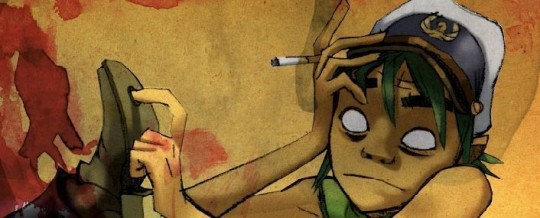
gorillaz drabbles: link
(requests closed: murdoc, 2D, noodle, russel)
the umbrella academy drabbles: link
(requests closed: luther, diego, allison, klaus, five, ben, viktor)
ghostbusters drabbles: link
(requests closed: lars pinfield, egon spengler, winston zeddemore, peter venkman, dana barrymore, ray stanz)
tf2 drabbles: link
(requests closed: scout, spy, sniper, medic, heavy, demoman, soldier, pyro, engineer, saxton hale, miss pauling)
total drama drabbles: link
(requests closed: mike, mal, manitoba, vito, svetlana, zoey, alejandro, duncan, gwen, heather, cody)
the outsiders drabbles: link
(requests closed: dallas winston, two-bit matthews, sodapop curtis, ponyboy curtis, darey curtis, johnny cade)
the walking dead drabbles: link
(requests closed: daryl, glenn, rick, michonne)
community drabbles: link
(requests closed: abed, troy, ian duncan)
gotham drabbles: link
(requests closed: edward nygma/the riddler)
tmmt drabbles: link
(requests closed: rottmnt, 2012 tmnt, bayverse turtles, donnie, leo, mikey, raph, casey, april)
dc drabbles: link
(requests closed: battinson, dano!riddler, cillian!jonathan crane, catwoman)
doctor who drabbles: link
(requests closed: the tenth doctor, rose)
hazbin hotel drabbles: link
(requests closed: alastor)
good omens drabbles: link
(requests closed: crowley, azriaphale)
spiderverse drabbles: link
(requests closed: miguel, hobie, miles, gwen, pavitr)
buzzfeed unsolved/watcher drabbles: link
(requests closed: shane, ryan, cc. tinsley, ricky goldsworth)
slimecicle cinematic universe drabbles: link
(requests closed: charlie, jschlatt, tommy/zommy, the bachelor (wilbur), the bachelor of blood (quackity), florida man, mad scientist, ronald, and the wizard)
chuckle sandwich drabbles: link
(requests closed: jschlatt, charlie slimecicle, ted nivison)
dsmp/mcyt drabbles: link
(requests: closed: see list of people i write for in pinned post)
daredevil drabbles: link
(requests closed: matt murdock, foggy nelson, karen page, frank castle)
the mandalorian drabbles: link
(requests closed: din darjin/the mandalorian)
potc drabbles: link
(requests closed: jack sparrow, william turner, elizabeth swann)
bullet train drabbles: link
(requests closed: tangerine, lemon, ladybug, maria, carver, the prince, the hornet)
suicide squad 1 & 2 drabbles: link
(requests closed: harley quinn, captian boomerang, katana, june moon, the enchantress, the joker, el diablo, cleo cazo, abner krill)
breaking bad drabbles: link
(requests closed: jesse, badger, skinny pete, jane, saul, gus)
better call saul drabbles: link
(requests closed: lalo, nacho, saul/jimmy, domingo/krazy 8, howard, gus)
what we do in the shadows drabbles: link
(requests closed: guillermo, laszlo, nadja, nandor)
xmen drabbles: link
(requests closed: charles xavier, erik, peter, hank, wolverine, raven, jean)
star wars drabble: link
(requests closed: obi wan kenobi, ashoka, anakin skywalker, padame, lea skywalker, luke skywalker, han solo)
markiplier drabbles: link
(requests closed: markiplier, darkiplier, wilford, yancy, actor, night, google, host, engineer, pornipliers, damien, eric)
jacksepticeye drabbles: link
(requests closed: jacksepticeye, anti, henrik, marvin, chase, jj, robbie, greg)
sally face drabbles: link
(requests closed: sal, larry, ash)
⋆﹥━━━━━━━━━━━━━━━﹤⋆ ☠
#x reader#headcanons#drabbles#potc#the mandalorian#chuckle sandwich#buzzfeed unsolved#dsmp#mcyt#scu#daredevil#breaking bad#better call saul#xmen#star wars#twd#the walking dead#doctor who#good omens#community#community x reader#tmnt#tmnt x reader#ghostbusters#ghostbusters x reader#gorillaz#the outsiders#the umbrella academy
193 notes
·
View notes
Text
(Mostly) Lost, but Not Forgotten: Omar Khayyam (1923) / A Lover’s Oath (1925)

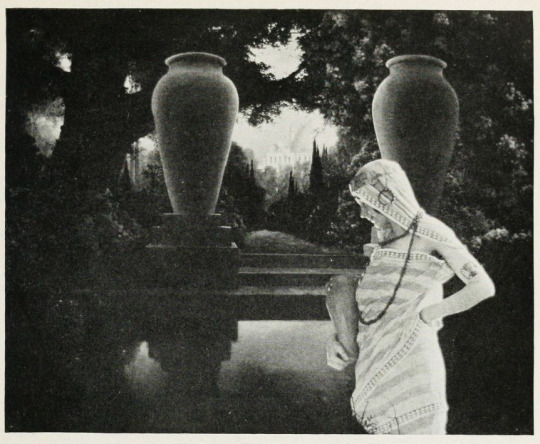


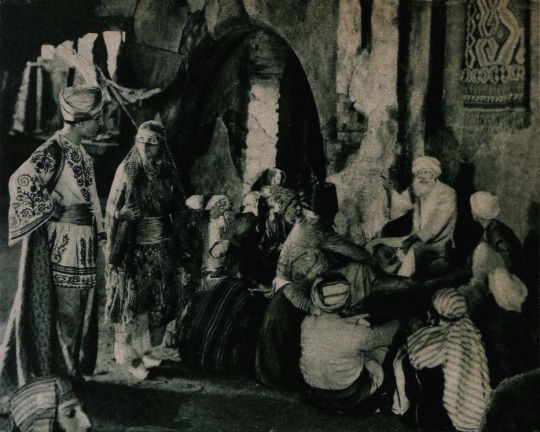
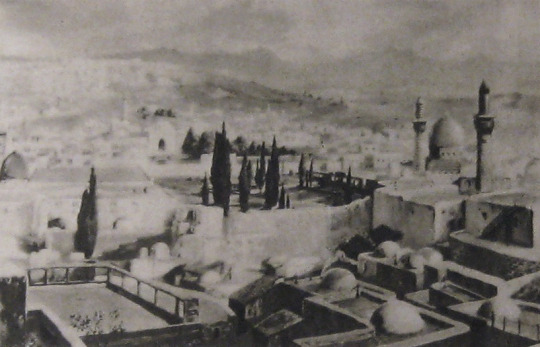

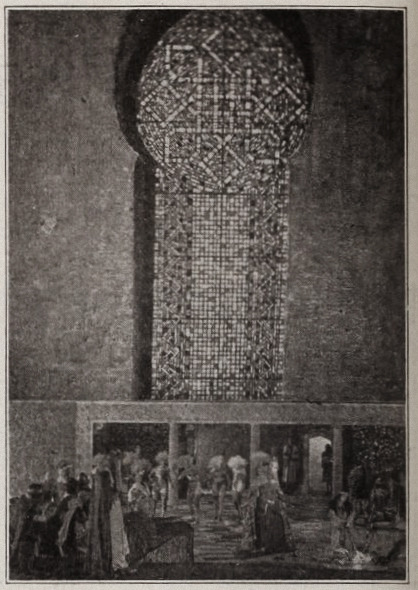
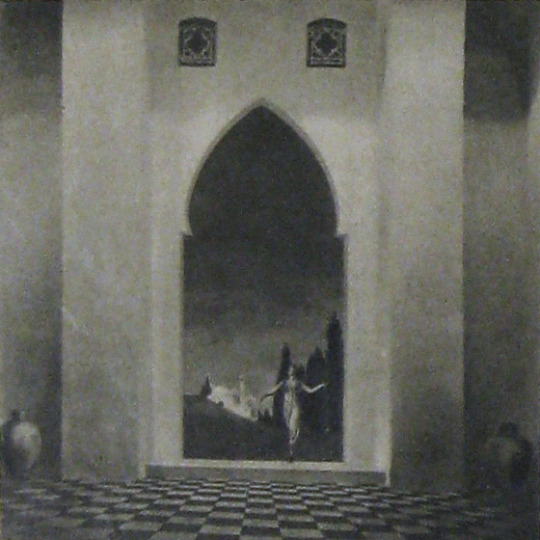



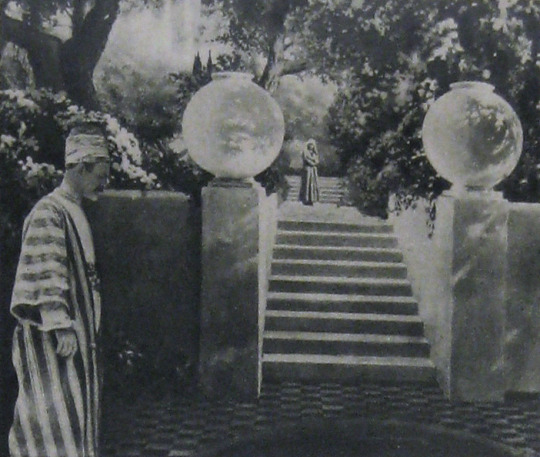
Alternate Titles: The Rubaiyat of Omar Khayyam, The Rubaiyat, Omar Khayyam, Omar
Direction: Ferdinand Pinney Earle; assisted by Walter Mayo
Scenario: Ferdinand P. Earle
Titles: Marion Ainslee, Ferdinand P. Earle (Omar), Louis Weadock (A Lover’s Oath)
Inspired by: The Rubaiyat of Omar Khayyam, as edited & translated by Edward FitzGerald
Production Manager: Winthrop Kelly
Camera: Georges Benoit
Still Photography: Edward S. Curtis
Special Photographic Effects: Ferdinand P. Earle, Gordon Bishop Pollock
Composer: Charles Wakefield Cadman
Editors: Arthur D. Ripley (The Rubaiyat of Omar Khayyam version), Ethel Davey & Ferdinand P. Earle (Omar / Omar Khayyam, the Director’s cut of 1922), Milton Sills (A Lover’s Oath)
Scenic Artists: Frank E. Berier, Xavier Muchado, Anthony Vecchio, Paul Detlefsen, Flora Smith, Jean Little Cyr, Robert Sterner, Ralph Willis
Character Designer: Louis Hels
Choreography: Ramon Novarro (credited as Ramon Samaniegos)
Technical Advisors: Prince Raphael Emmanuel, Reverend Allan Moore, Captain Dudley S. Corlette, & Captain Montlock or Mortlock
Studio: Ferdinand P. Earle Productions / The Rubaiyat, Inc. (Production) & Eastern Film Corporation (Distribution, Omar), Astor Distribution Corporation [States Rights market] (Distribution, A Lover’s Oath)
Performers: Frederick Warde, Edwin Stevens, Hedwiga Reicher, Mariska Aldrich, Paul Weigel, Robert Anderson, Arthur Carewe, Jesse Weldon, Snitz Edwards, Warren Rogers, Ramon Novarro (originally credited as Ramon Samaniegos), Big Jim Marcus, Kathleen Key, Charles A. Post, Phillippe de Lacy, Ferdinand Pinney Earle
Premiere(s): Omar cut: April 1922 The Ambassador Theatre, New York, NY (Preview Screening), 12 October 1923, Loew’s New York, New York, NY (Preview Screening), 2 February 1923, Hoyt’s Theatre, Sydney, Australia (Initial Release)
Status: Presumed lost, save for one 30 second fragment preserved by the Academy Film Archive, and a 2.5 minute fragment preserved by a private collector (Old Films & Stuff)
Length: Omar Khayyam: 8 reels , 76 minutes; A Lover’s Oath: 6 reels, 5,845 feet (though once listed with a runtime of 76 minutes, which doesn’t line up with the stated length of this cut)
Synopsis (synthesized from magazine summaries of the plot):
Omar Khayyam:
Set in 12th century Persia, the story begins with a preface in the youth of Omar Khayyam (Warde). Omar and his friends, Nizam (Weigel) and Hassan (Stevens), make a pact that whichever one of them becomes a success in life first will help out the others. In adulthood, Nizam has become a potentate and has given Omar a position so that he may continue his studies in mathematics and astronomy. Hassan, however, has grown into quite the villain. When he is expelled from the kingdom, he plots to kidnap Shireen (Key), the sheik’s daughter. Shireen is in love with Ali (Novarro). In the end it’s Hassan’s wife (Reicher) who slays the villain then kills herself.
A Lover’s Oath:
The daughter of a sheik, Shireen (Key), is in love with Ali (Novarro), the son of the ruler of a neighboring kingdom. Hassan covets Shireen and plots to kidnap her. Hassan is foiled by his wife. [The Sills’ edit places Ali and Shireen as protagonists, but there was little to no re-shooting done (absolutely none with Key or Novarro). So, most critics note how odd it is that all Ali does in the film is pitch woo, and does not save Shireen himself. This obviously wouldn’t have been an issue in the earlier cut, where Ali is a supporting character, often not even named in summaries and news items. Additional note: Post’s credit changes from “Vizier” to “Commander of the Faithful”]
Additional sequence(s) featured in the film (but I’m not sure where they fit in the continuity):
Celestial sequences featuring stars and planets moving through the cosmos
Angels spinning in a cyclone up to the heavens
A Potters’ shop sequence (relevant to a specific section of the poems)
Harem dance sequence choreographed by Novarro
Locations: palace gardens, street and marketplace scenes, ancient ruins


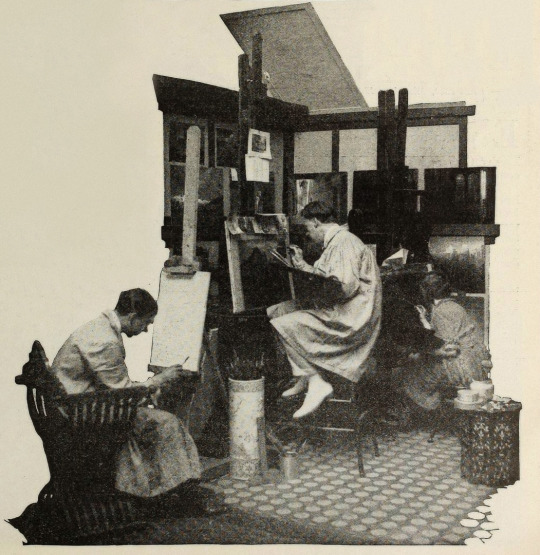


Points of Interest:
“The screen has been described as the last word in realism, but why confine it there? It can also be the last word in imaginative expression.”
Ferdinand P. Earle as quoted in Exhibitors Trade Review, 4 March 1922
The Rubaiyat of Omar Khayyam was a massive best seller. Ferdinand Pinney Earle was a classically trained artist who studied under William-Adolphe Bougueraeu and James McNeill Whistler in his youth. He also had years of experience creating art backgrounds, matte paintings, and art titles for films. Charles Wakefield Cadman was an accomplished composer of songs, operas, and operettas. Georges Benoit and Gordon Pollock were experienced photographic technicians. Edward S. Curtis was a widely renowned still photographer. Ramon Novarro was a name nobody knew yet—but they would soon enough.
When Earle chose The Rubaiyat as the source material for his directorial debut and collected such skilled collaborators, it seemed likely that the resulting film would be a landmark in the art of American cinema. Quite a few people who saw Earle’s Rubaiyat truly thought it would be:
William E. Wing writing for Camera, 9 September 1922, wrote:
“Mr. Earle…came from the world of brush and canvass, to spread his art upon the greater screen. He created a new Rubaiyat with such spiritual colors, that they swayed.”
…
“It has been my fortune to see some of the most wonderful sets that this Old Earth possesses, but I may truly say that none seized me more suddenly, or broke with greater, sudden inspiration upon the view and the brain, than some of Ferdinand Earle’s backgrounds, in his Rubaiyat.
“His vision and inspired art seem to promise something bigger and better for the future screen.”
As quoted in an ad in Film Year Book, 1923:
“Ferdinand Earle has set a new standard of production to live up to.”
Rex Ingram
“Fifty years ahead of the time.”
Marshall Neilan
The film was also listed among Fritz Lang’s Siegfried, Chaplin’s Gold Rush, Fairbanks’ Don Q, Lon Chaney’s Phantom of the Opera and The Unholy Three, and Erich Von Stroheim’s Merry Widow by the National Board of Review as an exceptional film of 1925.
So why don’t we all know about this film? (Spoiler: it’s not just because it’s lost!)
The short answer is that multiple dubious legal challenges arose that prevented Omar’s general release in the US. The long answer follows BELOW THE JUMP!
Earle began the project in earnest in 1919. Committing The Rubaiyat to film was an ambitious undertaking for a first-time director and Earle was striking out at a time when the American film industry was developing an inferiority complex about the level of artistry in their creative output. Earle was one of a number of artists in the film colony who were going independent of the emergent studio system for greater protections of their creative freedoms.
In their adaptation of The Rubaiyat of Omar Khayyam, Earle and Co. hoped to develop new and perfect existing techniques for incorporating live-action performers with paintings and expand the idea of what could be accomplished with photographic effects in filmmaking. The Rubaiyat was an inspired choice. It’s not a narrative, but a collection of poetry. This gave Earle the opportunity to intersperse fantastical, poetic sequences throughout a story set in the lifetime of Omar Khayyam, the credited writer of the poems. In addition to the fantastic, Earle’s team would recreate 12th century Persia for the screen.
Earle was convinced that if his methods were perfected, it wouldn’t matter when or where a scene was set, it would not just be possible but practical to put on film. For The Rubaiyat, the majority of shooting was done against black velvet and various matte photography and multiple exposure techniques were employed to bring a setting 800+ years in the past and 1000s of miles removed to life before a camera in a cottage in Los Angeles.
Note: If you’d like to learn a bit more about how these effects were executed at the time, see the first installment of How’d They Do That.
Unfortunately, the few surviving minutes don’t feature much of this special photography, but what does survive looks exquisite:

see all gifs here
Earle, knowing that traditional stills could not be taken while filming, brought in Edward S. Curtis. Curtis developed techniques in still photography to replicate the look of the photographic effects used for the film. So, even though the film hasn’t survived, we have some pretty great looking representations of some of the 1000s of missing feet of the film.
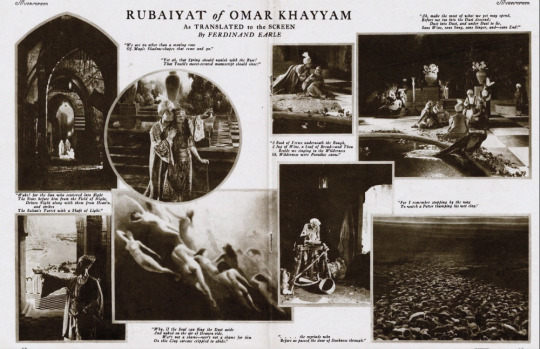
Nearly a year before Curtis joined the crew, Earle began collaboration with composer Charles Wakefield Cadman. In another bold creative move, Cadman and Earle worked closely before principal photography began so that the score could inform the construction and rhythm of the film and vice versa.
By the end of 1921 the film was complete. After roughly 9 months and the creation of over 500 paintings, The Rubaiyat was almost ready to meet its public. However, the investors in The Rubaiyat, Inc., the corporation formed by Earle to produce the film, objected to the ample reference to wine drinking (a comical objection if you’ve read the poems) and wanted the roles of the young lovers (played by as yet unknown Ramon Novarro and Kathleen Key) to be expanded. The dispute with Earle became so heated that the financiers absconded with the bulk of the film to New York. Earle filed suit against them in December to prevent them from screening their butchered and incomplete cut. Cadman supported Earle by withholding the use of his score for the film.
Later, Eastern Film Corp. brokered a settlement between the two parties, where Earle would get final cut of the film and Eastern would handle its release. Earle and Eastern agreed to change the title from The Rubaiyat of Omar Khayyam to simply Omar. Omar had its first official preview in New York City. It was tentatively announced that the film would have a wide release in the autumn.
However, before that autumn, director Norman Dawn launched a dubious patent-infringement suit against Earle and others. Dawn claimed that he owned the sole right to use multiple exposures, glass painting for single exposure, and other techniques that involved combining live action with paintings. All the cited techniques had been widespread in the film industry for a decade already and eventually and expectedly Dawn lost the suit. Despite Earle’s victory, the suit effectively put the kibosh on Omar’s release in the US.
Earle moved on to other projects that didn’t come to fruition, like a Theda Bara film and a frankly amazing sounding collaboration with Cadman to craft a silent-film opera of Faust. Omar did finally get a release, albeit only in Australia. Australian news outlets praised the film as highly as those few lucky attendees of the American preview screenings did. The narrative was described as not especially original, but that it was good enough in view of the film’s artistry and its imaginative “visual phenomena” and the precision of its technical achievement.
One reviewer for The Register, Adelaide, SA, wrote:
“It seems almost an impossibility to make a connected story out of the short verse of the Persian of old, yet the producer of this classic of the screen… has succeeded in providing an entertainment that would scarcely have been considered possible. From first to last the story grips with its very dramatic intensity.”
While Omar’s American release was still in limbo, “Ramon Samaniegos” made a huge impression in Rex Ingram’s Prisoner of Zenda (1922, extant) and Scaramouche (1923, extant) and took on a new name: Ramon Novarro. Excitement was mounting for Novarro’s next big role as the lead in the epic Ben-Hur (1925, extant) and the Omar project was re-vivified.

A new company, Astor Distribution Corp., was formed and purchased the distribution rights to Omar. Astor hired actor (note, not an editor) Milton Sills to re-cut the film to make Novarro and Key more prominent. The company also re-wrote the intertitles, reduced the films runtime by more than ten minutes, and renamed the film A Lover’s Oath. Earle had moved on by this point, vowing to never direct again. In fact, Earle was indirectly working with Novarro and Key again at the time, as an art director on Ben-Hur!
Despite Omar’s seemingly auspicious start in 1920, it was only released in the US on the states rights market as a cash-in on the success of one of its actors in a re-cut form five years later.
That said, A Lover’s Oath still received some good reviews from those who did manage to see it. Most of the negative criticism went to the story, intertitles, and Sills’ editing.
What kind of legacy could/should Omar have had? I’m obviously limited in my speculation by the fact that the film is lost, but there are a few key facts about the film’s production, release, and timing to consider.
The production budget was stated to be $174,735. That is equivalent to $3,246,994.83 in 2024 dollars. That is a lot of money, but since the production was years long and Omar was a period film set in a remote locale and features fantastical special effects sequences, it’s a modest budget. For contemporary perspective, Robin Hood (1922, extant) cost just under a million dollars to produce and Thief of Bagdad (1924, extant) cost over a million. For a film similarly steeped in spectacle to have nearly 1/10th of the budget is really very noteworthy. And, perhaps if the film had ever had a proper release in the US—in Earle’s intended form (that is to say, not the Sills cut)—Omar may have made as big of a splash as other epics.
It’s worth noting here however that there are a number of instances in contemporary trade and fan magazines where journalists off-handedly make this filmmaking experiment about undermining union workers. Essentially implying that that value of Earle’s method would be to continue production when unionized workers were striking. I’m sure that that would absolutely be a primary thought for studio heads, but it certainly wasn’t Earle’s motivation. Often when Earle talks about the method, he focuses on being able to film things that were previously impossible or impracticable to film. Driving down filming costs from Earle’s perspective was more about highlighting the artistry of his own specialty in lieu of other, more demanding and time-consuming approaches, like location shooting.
This divide between artists and studio decision makers is still at issue in the American film and television industry. Studio heads with billion dollar salaries constantly try to subvert unions of skilled professionals by pursuing (as yet) non-unionized labor. The technical developments of the past century have made Earle’s approach easier to implement. However, just because you don’t have to do quite as much math, or time an actor’s movements to a metronome, does not mean that filming a combination of painted/animated and live-action elements does not involve skilled labor.
VFX artists and animators are underappreciated and underpaid. In every new movie or TV show you watch there’s scads of VFX work done even in films/shows that have mundane, realistic settings. So, if you love a film or TV show, take the effort to appreciate the work of the humans who made it, even if their work was so good you didn’t notice it was done. And, if you’ve somehow read this far, and are so out of the loop about modern filmmaking, Disney’s “live-action” remakes are animated films, but they’ve just finagled ways to circumvent unions and low-key delegitimize the skilled labor of VFX artists and animators in the eyes of the viewing public. Don’t fall for it.
VFX workers in North America have a union under IATSE, but it’s still developing as a union and Marvel & Disney workers only voted to unionize in the autumn of 2023. The Animation Guild (TAG), also under the IATSE umbrella, has a longer history, but it’s been growing rapidly in the past year. A strike might be upcoming this year for TAG, so keep an eye out and remember to support striking workers and don’t cross picket lines, be they physical or digital!
Speaking of artistry over cost-cutting, I began this post with a mention that in the early 1920s, the American film industry was developing an inferiority complex in regard to its own artistry. This was in comparison to the European industries, Germany’s being the largest at the time. It’s frustrating to look back at this period and see acceptance of the opinion that American filmmakers weren’t bringing art to film. While yes, the emergent studio system was highly capitalistic and commercial, that does not mean the American industry was devoid of home-grown artists.
United Artists was formed in 1919 by Douglas Fairbanks, Charlie Chaplin, Mary Pickford, and D.W. Griffith precisely because studios were holding them back from investing in their art—within the same year that Earle began his Omar project. While salaries and unforgiving production schedules were also paramount concerns in the filmmakers going independent, a primary impetus was that production/distribution heads exhibited too much control over what the artists were trying to create.
Fairbanks was quickly expanding his repertoire in a more classical and fantastic direction. Cecil B. DeMille made his first in a long and very successful string of ancient epics. And the foreign-born children of the American film industry, Charlie Chaplin, Rex Ingram, and Nazimova, were poppin’ off! Chaplin was redefining comedic filmmaking. Ingram was redefining epics. Nazimova independently produced what is often regarded as America’s first art film, Salome (1923, extant), a film designed by Natacha Rambova, who was *gasp* American. Earle and his brother, William, had ambitious artistic visions of what could be done in the American industry and they also had to self-produce to get their work done.
Meanwhile, studio heads, instead of investing in the artists they already had contracts with, tried to poach talent from Europe with mixed success (in this period, see: Ernst Lubitsch, F.W. Murnau, Benjamin Christensen, Mauritz Stiller, Victor Sjöström, and so on). I’m in no way saying it was the wrong call to sign these artists, but all of these filmmakers, even if they found success in America, had stories of being hired to inject the style and artistry that they developed in Europe into American cinema, and then had their plans shot down or cut down to a shadow of their creative vision. Even Stiller, who tragically died before he had the opportunity to establish himself in the US, faced this on his first American film, The Temptress (1926, extant), on which he was replaced. Essentially, the studio heads’ actions were all hot air and spite for the filmmakers who’d gone independent.

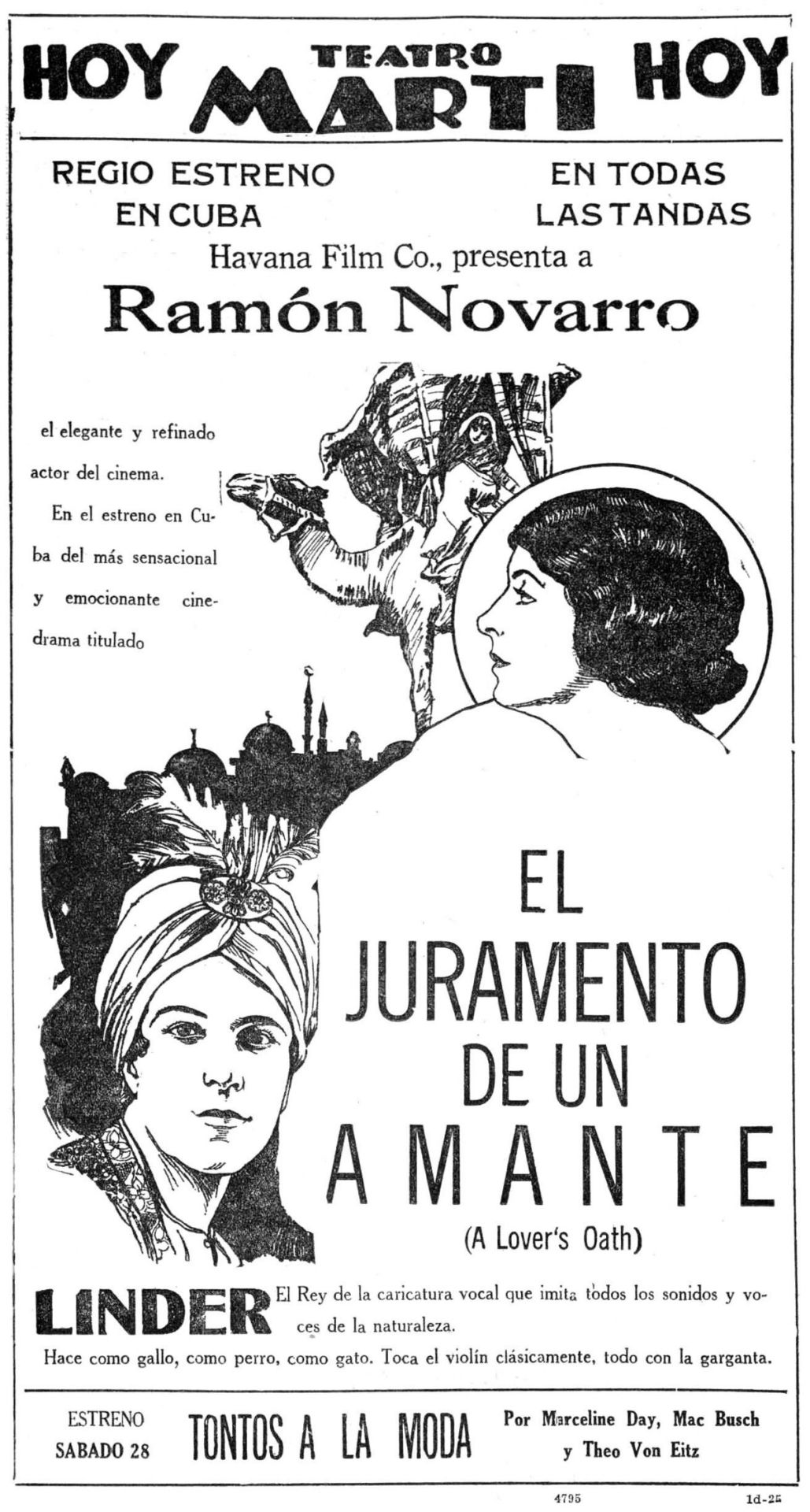
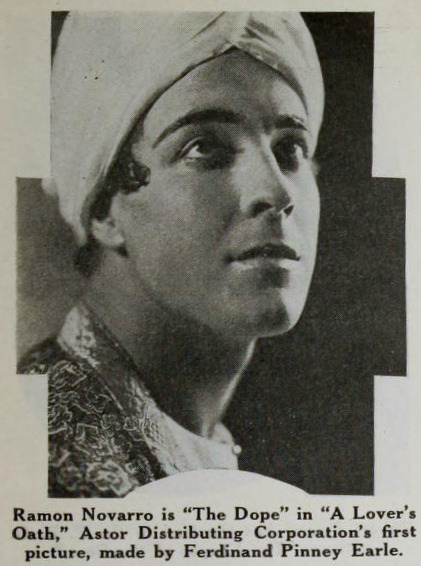
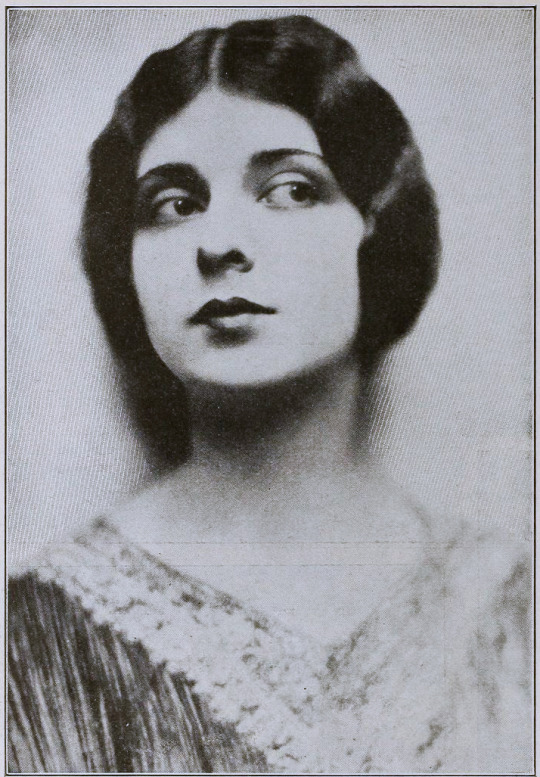
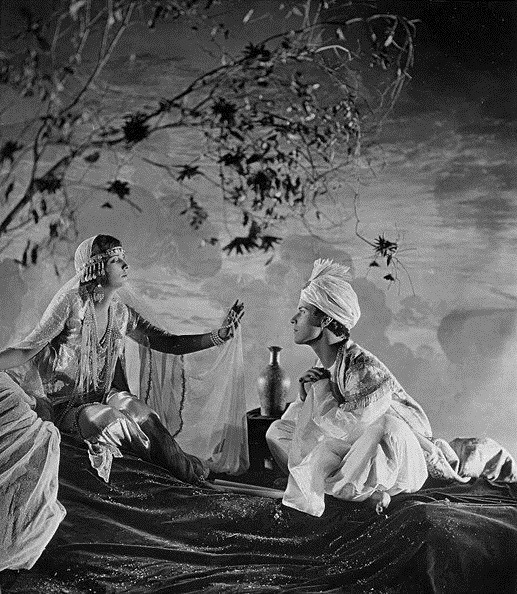
Finally I would like to highlight Ferdinand Earle’s statement to the industry, which he penned for from Camera in 14 January 1922, when his financial backers kidnapped his film to re-edit it on their terms:
MAGNA CHARTA
Until screen authors and producers obtain a charter specifying and guaranteeing their privileges and rights, the great slaughter of unprotected motion picture dramas will go merrily on.
Some of us who are half artists and half fighters and who are ready to expend ninety per cent of our energy in order to win the freedom to devote the remaining ten per cent to creative work on the screen, manage to bring to birth a piteous, half-starved art progeny.
The creative artist today labors without the stimulus of a public eager for his product, labors without the artistic momentum that fires the artist’s imagination and spurs his efforts as in any great art era.
Nowadays the taint of commercialism infects the seven arts, and the art pioneer meets with constant petty worries and handicaps.
Only once in a blue moon, in this matter-of-fact, dollar-wise age can the believer in better pictures hope to participate in a truely [sic] artistic treat.
In the seven years I have devoted to the screen, I have witnessed many splendid photodramas ruined by intruding upstarts and stubborn imbeciles. And I determined not to launch the production of my Opus No. 1 until I had adequately protected myself against all the usual evils of the way, especially as I was to make an entirely new type of picture.
In order that my film verison [sic] of the Rubaiyat of Omar Khayyam might be produced under ideal conditions and safeguarded from intolerable interferences and outside worries, I entered into a contract with the Rubaiyat, Inc., that made me not only president of the corporation and on the board of directors, but which set forth that I was to be author, production manager, director, cutter and film editor as well as art director, and that no charge could be made against the production without my written consent, and that my word was to be final on all matters of production. The late George Loane Tucker helped my attorney word the contract, which read like a splendid document.
Alas, I am now told that only by keeping title to a production until it is declared by yourself to be completed is it safe for a scenario writer, an actor or a director, who is supposedly making his own productions, to contract with a corporation; otherwise he is merely the servant of that corporation, subject at any moment to discharge, with the dubious redress of a suit for damages that can with difficulty be estimated and proven.
Can there be any hope of better pictures as long as contracts and copyrights are no protection against financial brigands and bullies?
We have scarcely emerged from barbarism, for contracts, solemnly drawn up between human beings, in which the purposes are set forth in the King’s plainest English, serve only as hurdles over which justice-mocking financiers and their nimble attorneys travel with impunity, riding rough shod over the author or artist who cannot support a legal army to defend his rights. The phrase is passed about that no contract is invioliable [sic]—and yet we think we have reached a state of civilization!
The suit begun by my attorneys in the federal courts to prevent the present hashed and incomplete version of my story from being released and exhibited, may be of interest to screen writers. For the whole struggle revolves not in the slightest degree around the sanctity of the contract, but centers around the federal copyright of my story which I never transferred in writing otherwise, and which is being brazenly ignored.
Imagine my production without pictorial titles: and imagine “The Rubaiyat” with a spoken title as follows, “That bird is getting to talk too much!”—beside some of the immortal quatrains of Fitzgerald!
One weapon, fortunately, remains for the militant art creator, when all is gone save his dignity and his sense of humor; and that is the rapier blade of ridicule, that can send lumbering to his retreat the most brutal and elephant-hided lord of finance.
How edifying—the tableau of the man of millions playing legal pranks upon men such as Charles Wakefield Cadman, Edward S. Curtis and myself and others who were associated in the bloody venture of picturizing the Rubaiyat! It has been gratifying to find the press of the whole country ready to champion the artist’s cause.
When the artist forges his plowshare into a sword, so to speak, he does not always put up a mean fight.
What publisher would dare to rewrite a sonnet of John Keats or alter one chord of a Chopin ballade?
Creative art of a high order will become possible on the screen only when the rights of established, independent screen producers, such as Rex Ingram and Maurice Tourneur, are no longer interferred with and their work no longer mutilated or changed or added to by vandal hands. And art dramas, conceived and executed by masters of screen craft, cannot be turned out like sausages made by factory hands. A flavor of individuality and distinction of style cannot be preserved in machine-made melodramas—a drama that is passed from hand to hand and concocted by patchworkers and tinkerers.
A thousand times no! For it will always be cousin to the sausage, and be like all other—sausages.
The scenes of a master’s drama may have a subtle pictorial continuity and a power of suggestion quite like a melody that is lost when just one note is changed. And the public is the only test of what is eternally true or false. What right have two or three people to deprive millions of art lovers of enjoying an artist’s creation as it emerged from his workshop?
“The Rubaiyat” was my first picture and produced in spite of continual and infernal interferences. It has taught me several sad lessons, which I have endeavored in the above paragraphs to pass on to some of my fellow sufferers. It is the hope that I am fighting, to a certain extent, their battle that has given me the courage to continue, and that has prompted me to write this article. May such hubbubs eventually teach or inforce a decent regard for the rights of authors and directors and tend to make the existence of screen artisans more secure and soothing to the nerves.
FERDINAND EARLE.
---
☕Appreciate my work? Buy me a coffee! ☕
Transcribed Sources & Annotations over on the WMM Blog!
See the Timeline for Ferdinand P. Earle's Rubaiyat Adaptation
#1920s#1923#1925#omar khayyam#ferdinand pinney earle#ramon novarro#independent film#american film#silent cinema#silent era#silent film#classic cinema#classic movies#classic film#film history#history#Charles Wakefield Cadman#cinematography#The Rubaiyat#cinema#film#lost film
41 notes
·
View notes
Text
👾Masterlist👾

My Hero Academia:
💪Yagi Toshinori💪:
Spending Quarantine with him
Asking him out on a date
Toshinori x daughter reader
Toshinori as your father
💤Aizawa💤:
Husband Material
Spending Quarantine with him
Him having a child with autism
Him having a child that has his lazy personality
Aizawa being your father would include
💥Hizashi💥
Spending Quarantine with him
Him as your father would include
⛓️Midnight⛓️
Her as your mother would include
Midnight with a short s/o
Other Characters:
Mt Lady with a short s/o
Black Butler
🐈⬛Sebastian🐈⬛
Quarantine with Sebastian
Modern Sebastian
Having a crush on him would include
Having an s/o that loves musicals
Having an s/o die during birth
Having an s/o who likes rock/heavy metal
Cuddling with Sebastian would include
💋Grell💋
Crushing on Grell
Having an s/o who likes musicals
Grell doing her s/o's nails
Movie Date with Grell
Grell dating a trainee reaper
🪦Undertaker🪦
Having an s/o how likes musicals
Ouran High School Host Club
🪞Tamaki🪞
Tamaki having a sister who is dating Kyoya would include
Being Tamaki's sister would include
Being in a poly relationship with him and Kyoya
👓Kyoya👓
Him dating a commoner
First Kiss
Being in a poly relationship with him and Tamaki
Cuddling with him
Other Stories:
Being best friends with the twins
Kakegurui
❤️Yumeko❤️
Yumeko Hcs
💛Mary💛
Mary Hcs
💙Kiriari💙
Kiriari Hcs
🖤Midari🖤
Midari Hcs
Encanto
🪄Madrigals🪄
Madrigals x Reader
💛💛Dolores💛💛
Dolores x Reader
☀️Peppa☀️
Married life with Peppa
Peppa with an s/o that comes back from the army
Peppa x Wife reader
Jealous! Peppa x reader
Peppa x Reader having fun with their kids
Peppa x Wife! Reader, reader gets injured during casita falling apart
Jealous! Peppa x Reader
More Peppa Hcs
Peppa Hcs
💐Isabella💐
Isabella x Reader
The Outsiders
Dating Ponyboy Curtis
Cuddling with Johnny
Ponyboy having a crush Hcs
Being the Curtis's little sister would include
Arguing with Darry hcs
Cuddling with Soda
The boys reacting to when their s/o gets bullied
🔪Slashers🔪
Slashers Nightly Routine
Slashers with a Taxidermist s/o
▪️Michael Myers▪️
Michael with a small s/o
🖤Billy and Stu🖤
Billy x Stu
Billy x Reader x Stu
Billy and Stu in Quarantine
Billy x Reader x Stu, the reader collects Halloween masks
Billy x Reader x Stu, Color soulmate AU
🤠Sawyer Brothers🤠
The brothers if they had a sister
If you ignored them
Cuddling with them
What do the brothers think of what they do
Bubba Sawyer
Bubba with a s/o who speaks french
🪩Choptop Sawyer🪩
Choptop and Nubbins fighting over you
Chop top with a s/o who speaks french
Chop Top with a plus size reader
Chop top as a father
📸Nubbins Sawyer📸
Nubbins with a plus size reader
Nubbins as a father
🧹Drayton Sawyer🧹
Child's Play
🤬Chucky/Charles🤬
Dating him in his human form
💌Tiffany Valentine 💌
Short Story Tiffany x Reader
☠️The Walking Dead ☠️
Negan Imagine (Being Negans Daughter)
🗡️Adventure Time🗡️
Dating Marceline Hcs
PB x Friend Imagine
🐢TMNT🐢
Mikey With An Autistic Child
💜BTS💜
Spending Quarantine With Namjoon
Spending Quarantine With the Hyung Line
🏐Haikyuu🏐
Spending Quarantine with the First Years would Include
That is all I got for now! If I am missing anything let me know!! But for now I will be working on a few things I have been behind in. But I will be opening up requests again!
#tmnt mikey#adventure time imagines#adveture time#The walking dead#Negan#TWD#tiffany valentine#Chucky#Childs play#Slashers#Slasher Imagines#Billy Loomis#stu and billy imagine#Stu matcher#TCM#texas chainsaw massacre 3#texas chainsaw massacre#encanto pepa#encanto#isabela madrigal x reader#isabella madrigal#pepa madrigal imagines#pepa madrigal#dolores madrigal#grell sutcliff imagines#grell sutcliff#black butler#sebastian michaelis#MHA#my hero academia toshinori
107 notes
·
View notes
Note
To the anon asking which ‘celebs’ showed support
1. Not with statements but these are the ones who at least posted a heart or a like, so I think it’s kinda of a support:
Antoine Arnault
Angella Kelly
Sabine Getty
Lauren Santo Domingo
Jennifer Garner
Marchioness of Bath
Mateen (Prince of Brunei)
Roman Kemp
India Hicks
Tatiana Mountbatten
Johanna Ortiz
(And many British celebs who aren’t well known)
2. Those who release an statement:
Giovanna Fletcher (Cressida ‘liked’ her post)
Meg Bellamy (aka Kate in the crown)
Charles Spencer 😬 (hits three words tho)
Jamie Lee Curtis
Catherine Zeta Jones
Luke Evans
Ons Jabeur
Jo Frost
Bear Grills
Ivanka Trump
Gwyneth Paltrow
Zara McDermott
(Many former tennis players (but more in Twitter)
!
16 notes
·
View notes
Text
The people in the media and Hollywood who called pizzagate a hoax now stand with Israel.
Joe Biden
Hilary Clinton
John Podesta
Alan Dershowitz
Bill Gates
Jamie Lee Curtis
Oprah Winfrey
Dwayne "The Rock" Johnson
Meghan McCain
Madonna
Seth Myers
King Charles
Prince William
Kate Middleton
Meghan Markle
Prince Harry
Kim Kardashian
Chrissy Teigen
John Legend
LeBron James
Ellen DeGeneres
Jamie Lee Curtis
Sarah Silverman
Mark Hamill
How many pedophiles can suppport Israel until mathematically impossible? 🤔
#pay attention#educate yourselves#educate yourself#knowledge is power#reeducate yourself#reeducate yourselves#think about it#think for yourselves#think for yourself#do your homework#do some research#do your own research#ask yourself questions#question everything
44 notes
·
View notes
Text
WELOME to Captured Charles AU !!
My name is Minnie! I’m over 18, I’m female, and my birthday is on April 17 :D I’m a happy go lucky person who is heterosexual and I LOVE EVERYTHING THSC :D
Hey! Here you can see my story in order so people can get caught up! :D
The main protagonists are: Reginald Copperbottom and Charles Calvin
The main antagonists are: Terrence Suave and Burt Su— erm I mean Curtis 👀
I hope you enjoy!! :D
There will also be a series of flashbacks in my story from either Reginald, RHM, and Terrence!
(Flashback) R = Reginald’s memory
(Flashback) R = RHM’s memory
(Flashback) T = Terrence’s memories
WARNING!! My story can be VERY dark at times read at your own risk!
Cover art for this was made by @rubyshot
Author for this story is me! My helper and co-creator is @jaytoons7 who helped me mold my universe and made this a reality!
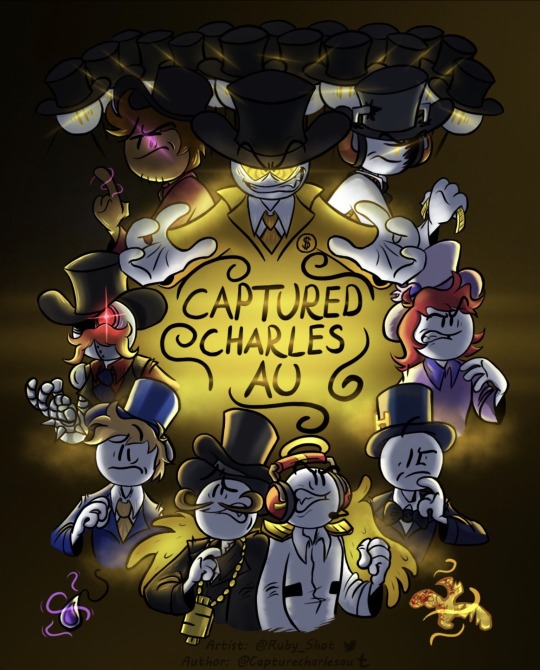
RE-UPLOAD
The following links are RE-UPLOADED from my last blog so I’ll be adding the chapter’s/links down here to get caught up in my story! :D
Chapter One: ✨ Captured Charles ✨
✨ Part 1: Courage… ✨
✨ Part 2: Uh oh…something’s wrong… ✨
Chapter Two: ✨ Why hello there… ✨
✨ Part 1: Oh hi Toppat Leaders! ✨
✨ Part 2: Svensson’s trouble’s ✨
✨ Part 3: Guess who’s here! ✨
Chapter 3: ✨ Guilty ✨
✨Part 1: Yeah, where is Burt? ✨
✨ Part 2: It’s stronger then you ✨
✨ Part 3: Rule through fear ✨
✨ Part 4: You did this ✨
✨ Part 5: My angel, my world… ✨
Chapter 4: ✨ London ✨
✨ Part 1: Capture Reg! ✨
✨ Part 2: Suave and Charm ✨
Chapter 5: ✨ Drunk nights ✨
✨ Part 1: Control ✨
✨ Part 2: Manipulation ✨
✨ Part 3: Lovey Terry ✨
✨ Part 4: Blinding Lights ✨
✨ Part 5: Hungry… ✨
✨ Part 6: I would never hurt someone…. ✨
From this point forward it is NOT a Re-Upload it is now a continuation :D 👇
Chapter 6: ✨ See through… ✨
✨ Part 1: Stolen ✨
✨ Part 2: Don’t make me!! ✨
✨ Part 3: Jealousy… ✨
✨ Part 4: (Flashback)R Swedish freak… ✨
✨ Part 5: Old memories… ✨
✨ Part 6: Stay here…. ✨
Chapter 7: ✨ Decision making… ✨
✨ Part 1: (Flashback) R Stupid Reg… ✨
✨ Part 2: Give ‘em hell! ✨
✨ Part 3: One true love… ✨
✨ Part 4: Loss of sanity… ✨
✨ Part 5: Doesn’t deserve… ✨
✨ Part 6: Found ya! ✨
✨ Part 7: Confessions ✨
✨ Part 8: Spread my wings…. ✨
Chapter 8: ✨ Better… ✨
✨Part 1: Mi amore… ✨
✨ Part 2: Teasing… ✨
✨ Part 3: Made of love… ✨
✨ Part 4: Before you do… ✨
✨ Part 5: (Flashback)/R Night after night… ✨
✨ Part 6: Forced… ✨
✨ Part 7: Boys a liar… ✨
✨ Part 8: Only human… ✨
✨ Part 9: Hypocrite… ✨
✨ Part 10: Psychotic… ✨
Chapter 10: ✨ PAY!!! ✨
✨ Part 1: (Flashback)/T You’ll see… ✨
✨ Part 2: You make me begin…. ✨
✨ Part 3: Look at what you did… ✨
✨ Part 4: A better idea…. ✨
✨ Part 5: Not around… ✨
✨ Part 6: It’s time… ✨
Chapter 11: ✨ People of the Pride (Part one) ✨
✨ People of the Pride (Part two) ✨
✨ Part 2: Once again… ✨
✨ Part 3: (Final Chapter) My name is Terrence Suave… ✨
Captured Charles: The Epilogue

Wanna know what happens next? Will Sven execute Burt? How will the clan recover from Terrence Suave? Find out in the link below to lead you to my chapters to find out!
CAPTURED CHARLES: EPILOGUE

Character Bios (Get to know my versions of the characters and some OC’s
💜 Character Bio: Reginald Copperbottom 💜
♥️ Character Bio: Charles Calvin ♥️
💛Character Bio: Terrence Suave 💛
🧡Character Bio: Burt Curtis 🧡
💖Charecter Bio: Danny Felizima 💖
💙Character Bio: Sven Svensson 💙
🌟 💕 Everything about my Danny OC: 💕 🌟
🌟 Why Is Danny Felizima (my OC persona) so dark and bloody? 🌟
🌟 Danny’s shitfucked priorities :) 🌟
⭐️ Danny’s food priorities :) ⭐️
👔Captured Charles clothes:
Part 1: 👔 Charles, Reginald, Terrence, Sven, Burt, RHM 👔
The canon voices of my OC’s
🎙 Official OC canon voices 🎙
🎙 Danny Talking regular example as his canon voice The Weeknd 🎙
THSC CHARACTER AND OC HEIGHT CHART :D
⬆️ Height chart ⬆️
ORIGIN STORIES:

Want to know the origins of our many beloved THSC characters? The link below will show you links to different characters!
CAPTURED CHARLES: ORIGINS
#the henry stickmin collection#henry stickmin collection#thsc#captured!charles au#terrence suave#reginald copperbottom#charles calvin#burt curtis
98 notes
·
View notes